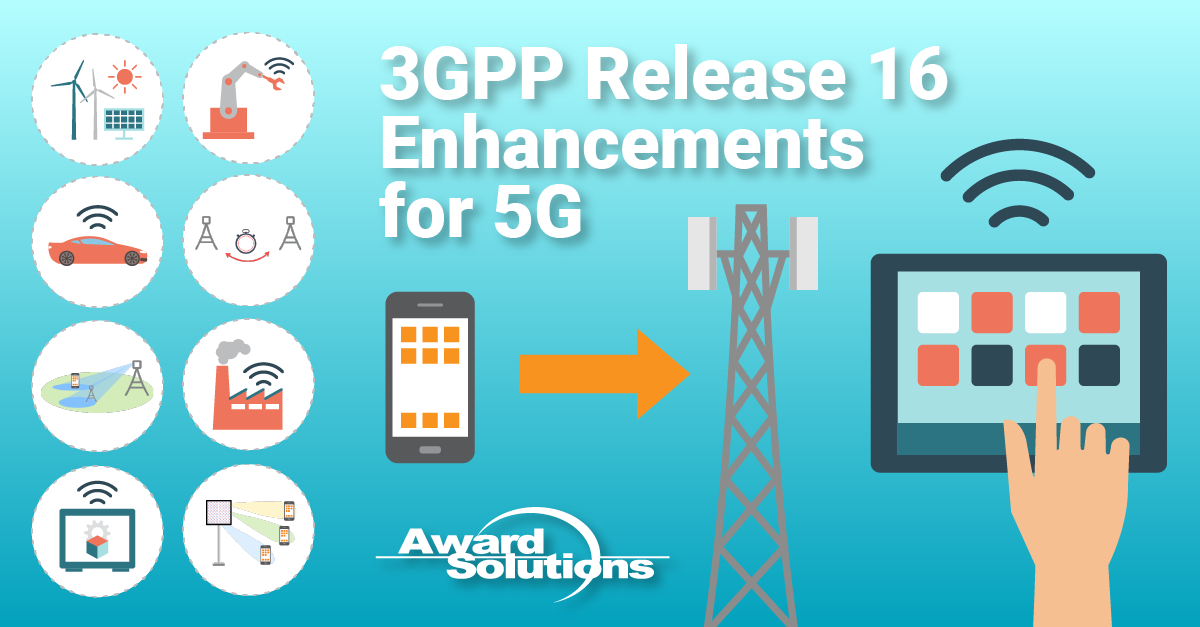
5G Standards Advancement
3GPP introduced LTE in Release 8 and LTE-Advanced in Release 10. As part of 5G specifications, Release 15 defines the 5G New Radio (NR) air interface and the 5G radio access and core networks. Release 16 (R16) introduces Non-Standalone (NSA) deployments – allowing 5G NR benefits for LTE-based networks – and Standalone (SA) deployments, where operators can take advantage of the additional benefits of 5G.
In Release 16 (R16), 3GPP, the wireless network standards body, enhanced the capabilities of 5G to support several improvements to the NR air interface, including unlicensed spectrum in the millimeter wave (mmW) range and improved support for the Industrial Internet of Things (Industrial IoT) and Ultra-Reliable Low Latency Communications (URLLC). In addition, several enhancements have been made to the network to improve deployment flexibility and enhance performance.
Support for 5G Use Cases in Release 16
5G was created to address several use cases for wirelessly connected devices, ranging from Enhanced Mobile Broadband (eMBB) to Massive Internet of Things (mIoT) and Ultra-Reliable Low Latency Communications (URLLC). While Release 15 primarily focused on eMBB with limited support for other use cases, R16 addresses enhancements for URLLC and Internet of Things (IoT) and adds support for Vehicle to Everything (V2X) in 5G.
Ultra-Reliable Low Latency Communications
Included enhancements provide low latency communication to support industrial automation, connected cars, and telemedicine applications.
- Time-Sensitive Networking (TSN) architecture allows redundant transmissions to support URLLC applications. In addition, the TSN service provides time synchronization of packet delivery by integrating with an external network.
- By supporting low latencies and reducing signaling overhead, R16 enhances the uplink synchronization (RACH) procedure to support a two-step RACH, whereas the original used four steps.
- Included mobility enhancements reduce the interruption time and improve reliability during handovers for 5G connected devices.
Internet of Things (IoT)
Industrial IoT capabilities cater to services for industries like manufacturing, logistics, oil and gas, transportation, energy, mining, aviation, etc.
- Cellular IoT (CIoT) is now available with 5G. Similar to what was offered in LTE (LTE-M and NB-IoT), CIoT allows IoT traffic to be carried in network signaling.
- Power efficiency features, including enhanced Discontinuous Reception (DRX), relaxed radio resource management for idle devices, and scheduling enhancements, improve the battery life of IoT devices.
Vehicle-to-Anything
Going beyond the capabilities of V2X services that LTE supported in R14, R16 supports several enhancements to V2X using 5G NR access, such as enhanced autonomous driving, accelerated network effects, and energy-saving features.
5G Network Enhancements in Release 16
As 5G network deployments advance, there is a need for more capacity in the Radio Access Network (RAN) and more flexibility in network deployments, including support for private networks.
Radio Access Network Capacity and Performance
Capacity
- Multiple Input Multiple Output (MIMO) improvements include enhancements to the CSI Type II codebook for MU-MIMO, Multiple Transmission and Reception (multi-TRP/panel transmissions), multi-beam operations in Frequency Range 2 (FR2) for millimeter wave, and low Peak-to-Average Power Ratio (PAPR) reference signals.
- Similar to Licensed Assisted Access (LAA) and enhanced LAA for LTE access, 3GPP R16 supports NR access to unlicensed spectrum to improve throughput and capacity in Wi-Fi in the 5-6 GHz range.
Performance
- Radio Access Capabilities Signaling (RACS) optimization: An RACS ID is established that maps to the device's radio capabilities to optimize the signaling of the UE's radio capabilities. Multiple UEs may share a single RACS ID and store in the NG-RAN and Access and Mobility Management Function (AMF). In addition, a new network function has also been introduced, called the UE Capability Management Function (UCMF).
- NR should feature prevalently in higher spectrum Time Division Duplexing (TDD) bands; cross-link interference, where the downlink of one cell interferes with the uplink of another cell due to the reflection and refraction of electromagnetic waves, is inherent. NR R16 supports remote interference management to mitigate this cross-link interference.
Network Deployment Flexibility and Performance
Flexibility
- R16 allows sharing the NR air interface to provide backhaul where fiber solutions are not feasible. In addition, Integrated Access and Backhaul (IAB) enhances capacity by quickly deploying denser access points.
- Non-Public Network (NPN): R16 supports two types of NPN: Standalone NPN (SNPN) and Public Network-Integrated NPN (PNI-NPN).
- Flexible support for SMF and UPF deployments: R16 introduces management flexibility for Session Management Functions (SMFs) and User Plane Functions (UPFs), where multiple SMFs may control one UPF, and the UPF may assign IP addresses instead of the SMF.
- Enhancements in Network Slicing: R16 adds Network Slice Specific Authentication and Authorization (NSSAA) to support separate authentication and authorization of services within a given network slice.
- Enhancements for Service-Based Architecture (eSBA): R16 enhances service discovery and routing, including introducing a new Service Communication Proxy (SCP) network function.
Performance
R16 includes enhancements for Network Automation Architecture (eNA). R15 had support for data collection and network analytics exposure functions. In R16, a network analytics ID is available to assign specific analytic data, like network usage per network slice, UE mobility information, and network performance allowing the Network Data Analytics Function (NWDAF) to collect data specific to the analytics ID.
Summary
Wireless network standards add several new 5G capabilities in Release 16 of the 3GPP specifications. These standards enhance support for URLLC and mIoT use cases and add support for V2X use cases. In addition, new changes improve the capacity, flexibility, and performance of the 5G network, including access to more spectrum and support for private networks.
